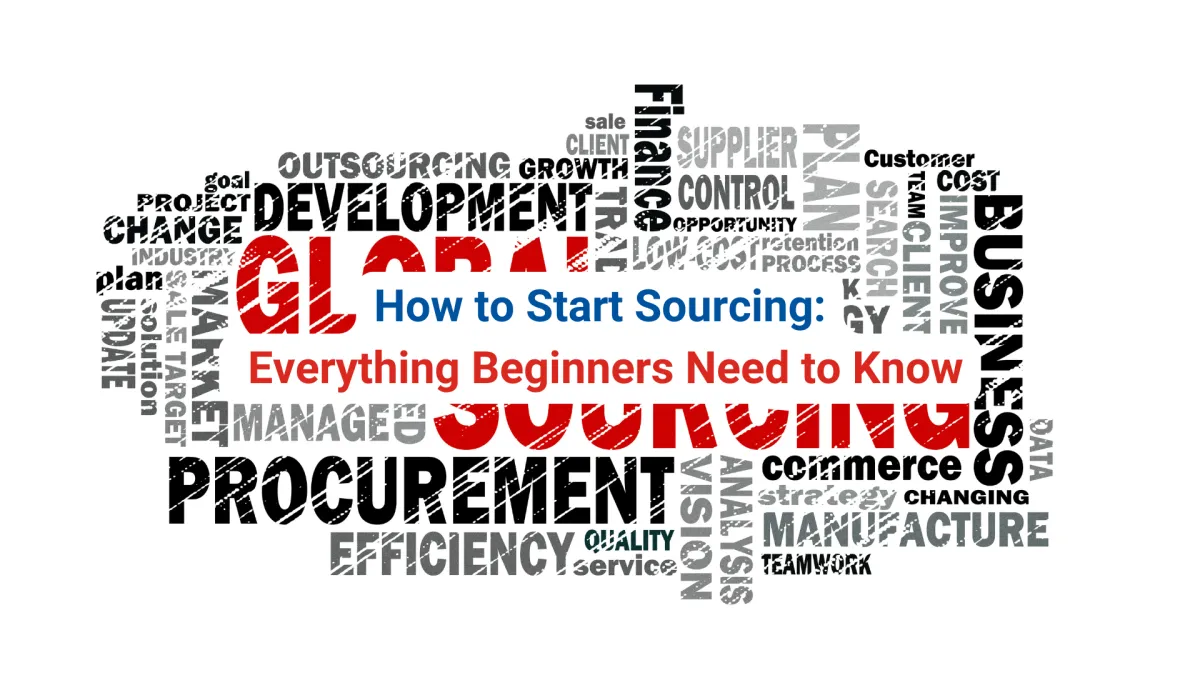
A Beginner’s Guide to Finding Reliable Manufacturers: How to Start Sourcing and What to Expect
Sourcing is a critical process in bringing a product to market, but for beginners, it can feel like navigating a maze. From selecting materials and negotiating prices to ensuring production timelines and managing logistics. Sourcing requires a strategic approach and a clear understanding of the steps involved. Here’s a comprehensive guide to help you get started and set realistic expectations for your sourcing journey.
What is Sourcing?
Sourcing involves identifying and securing the materials, products, or suppliers needed to create and deliver your goods. Whether you’re looking to produce clothing, Infant supplies, furniture, pet products, or any other product, sourcing is about finding the right partners to meet your quality, cost, and timeline requirements.
Step 1: Define Your Needs
Before diving into the sourcing process, take the time to define your requirements. This clarity will help you identify suitable suppliers and streamline negotiations.
Product Specifications: Outline your product’s design, dimensions, materials, and functionality. The more detailed your specifications, the easier it will be to find the right supplier.
Quality Standards: Decide on the level of quality you require and any certifications your product must meet (e.g., ISO, CE, or FDA standards).
Budget: Determine your budget for production and shipping. Be realistic about costs, including potential unexpected expenses.
Production Volume: Know your initial order quantities and forecast future production needs.
Step 2: Research Suppliers
Finding the right suppliers is one of the most challenging aspects of sourcing. Beginners often start with online platforms or local directories, but these methods can be overwhelming.
Start with Pre-Vetted Suppliers: Consider using sourcing reports or working with agencies that provide access to pre-screened manufacturers.
Visit Trade Shows: Trade shows, both in-person and virtual, are excellent opportunities to meet suppliers and assess their capabilities.
Leverage Local Expertise: Hiring a sourcing agent with experience in your target manufacturing region can save you time and help overcome language and cultural barriers.
Purchase a Sourcing Report: Save time, effort, and thousands of dollars by letting Vietnam Sourcing Reports handle the hard work of vetting suppliers. Our expertly curated reports offer a handpicked list of reliable manufacturers with proven expertise in producing the products you need. Simply select a report tailored to your industry and gain instant access to trusted suppliers ready to meet your requirements.
Step 3: Request Samples
Before committing to a supplier, request product samples to evaluate their quality and craftsmanship. Pay attention to:
Material quality and durability.
Workmanship and attention to detail.
Whether the sample matches your specifications.
Receiving samples also provides an opportunity to assess the supplier’s communication skills and responsiveness.
Step 4: Negotiate Terms
Negotiating with suppliers is about more than just pricing. Be prepared to discuss:
Unit Costs: Aim for competitive pricing, but ensure the supplier can still maintain quality.
Payment Terms: Negotiate payment schedules that protect both you and the supplier (e.g., 30% upfront, 70% on delivery).
Minimum Order Quantities (MOQs): Understand the supplier’s MOQ and whether they can accommodate smaller orders if needed.
Lead Times: Confirm production timelines and build in buffer periods for unexpected delays.
Step 5: Plan Your Production Timeline
A realistic production timeline is essential to meeting your market launch or restocking goals. Coordinate with your supplier to:
Establish a clear production schedule.
Identify potential bottlenecks or risks (e.g., material shortages or shipping delays).
Schedule quality control checks at key stages of production.
Step 6: Implement Quality Control
Consistent product quality is vital to maintaining customer satisfaction and protecting your brand’s reputation. Steps to ensure quality include:
Third-Party Inspections: Hire inspectors to evaluate production at various stages.
Clear Quality Standards: Share detailed guidelines with your supplier to avoid misunderstandings.
Pre-Shipment Checks: Inspect goods before they are shipped to ensure they meet your specifications.
Step 7: Manage Logistics
Shipping and logistics can be complex, especially when working with international suppliers. Key considerations include:
Freight Forwarding: Partner with a reliable freight forwarder to handle customs clearance and shipping logistics.
Incoterms: Understand terms like FOB (Free on Board) or CIF (Cost, Insurance, and Freight) to determine who is responsible for shipping costs and risks.
Customs and Duties: Research import regulations and tariffs for your target market to avoid unexpected costs.
What to Expect as a Beginner
Trial and Error: Finding the perfect supplier often takes time. Be patient and prepared to test multiple options before settling on a long-term partner.
Cultural and Language Differences: Working with overseas suppliers requires sensitivity to different business practices and effective communication tools.
Unforeseen Challenges: Delays, quality issues, and logistical hurdles are common in sourcing. Build flexibility into your plans to adapt to these challenges.
Learning Curve: The more you engage in sourcing, the more you’ll refine your skills and processes, making future efforts smoother and more efficient.
Tips for Sourcing Success
Start Small: Place smaller initial orders to test a supplier’s reliability and product quality.
Invest in Relationships: Building a strong partnership with your supplier can lead to better pricing, priority production slots, and greater flexibility.
Stay Organized: Use tools like project management software, shared documents, and clear timelines to stay on track.
Ask the Right Questions: Inquire about production capabilities, certifications, lead times, and any additional costs before signing contracts.
Your Sourcing Journey Starts Here
Sourcing is a complex but rewarding process that plays a pivotal role in your product’s success. By understanding the steps involved, setting clear expectations, and leveraging the right tools and resources, you can navigate the challenges and build a reliable supply chain. Remember, the key to successful sourcing lies in preparation, patience, and persistence.
Whether you’re sourcing materials, components, or finished goods, take the time to research, negotiate, and build strong partnerships. Your efforts will pay off in the form of quality products, satisfied customers, and a thriving business.
Just know that you don’t have to go through this process alone. Let us help take the guess work out of sourcing by supplying you with a list of quality manufacturers in Vietnam.
